Imagine stepping into a world where the seasons bend to your will, a haven where your plants flourish regardless of the chill outside. Growing your own greenhouse garden is not just about extending the gardening season; it’s about creating a controlled environment where plants can thrive, offering a sanctuary for both novice and seasoned gardeners. Whether you’re nurturing your first tomato seedlings or cultivating exotic orchids, a greenhouse opens up a realm of possibilities, bringing a touch of the extraordinary to your everyday gardening experience.
For beginners, a greenhouse can seem like a magical realm of endless opportunity, yet it may also feel a bit daunting. Fear not, as this article will guide you through the basics, from selecting the right structure to understanding temperature control and ventilation. Meanwhile, experienced gardeners will appreciate the deeper dive into advanced techniques, such as optimizing growing conditions and experimenting with diverse plant varieties. This journey will unfold the secrets of maximizing your greenhouse’s potential, transforming it into a bountiful oasis that yields results year-round.
You’ll discover practical tips for planning and organizing your space, ensuring that every square foot is utilized to its fullest potential. We will explore innovative ways to harness natural light, maintain optimal humidity, and navigate the challenges of pest management. By the end of this article, you’ll be equipped with actionable insights to cultivate a greenhouse garden that not only sustains but also inspires. So, roll up your sleeves, embrace the warmth of your greenhouse, and let’s embark on this vibrant gardening adventure together.
Choosing Your Greenhouse Structure
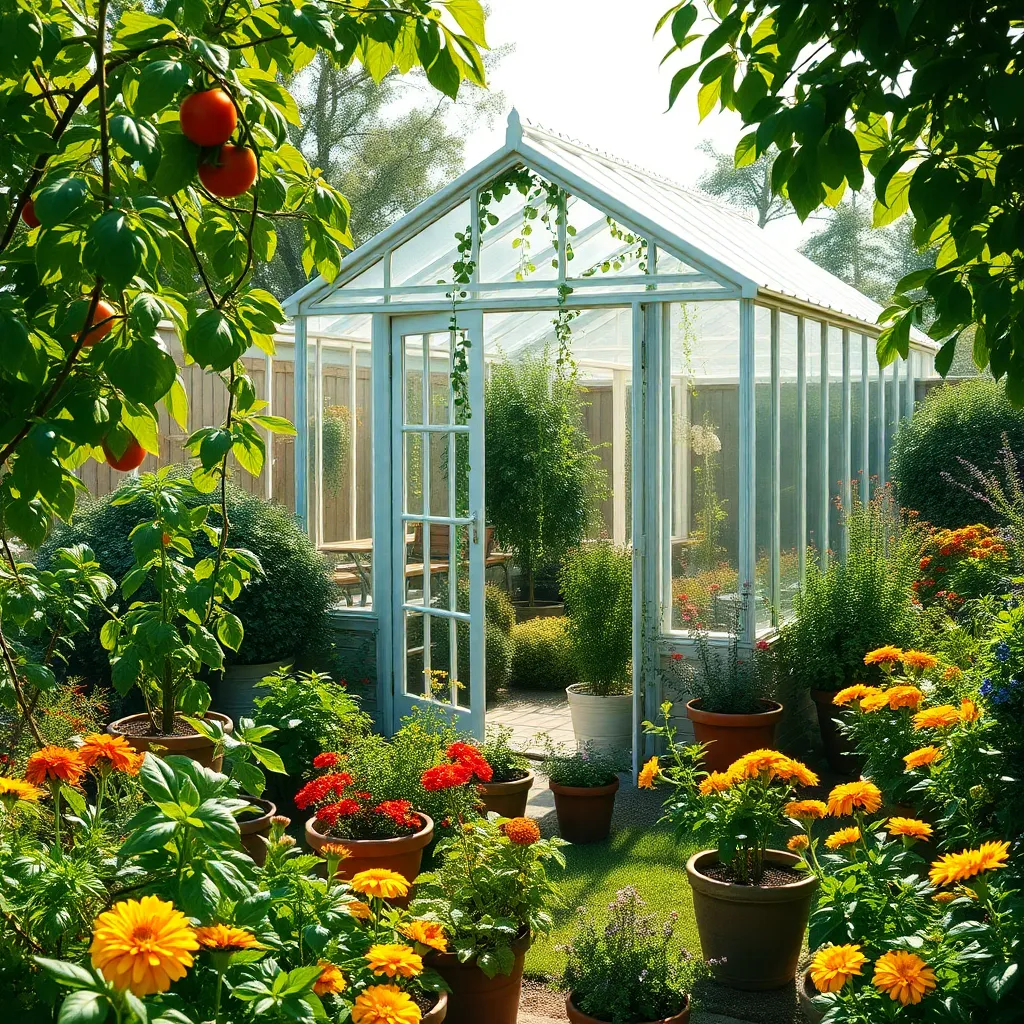
When selecting a greenhouse structure, consider the space you have available and the types of plants you wish to grow. Greenhouses come in various sizes and shapes, from compact mini-greenhouses perfect for small backyards to larger freestanding models suited for expansive gardens.
Material choice is crucial for maintaining optimal growing conditions. Polycarbonate panels are a popular choice for their durability and excellent light diffusion, while glass panels offer superior clarity and aesthetics but may require more careful handling.
For beginners, a simple hoop house or a lean-to structure attached to an existing building can be an economical and effective choice. These options often provide sufficient protection from the elements while maintaining adequate ventilation.
Experienced gardeners might explore more advanced features such as automatic vent openers or integrated irrigation systems. These additions help maintain consistent growing conditions and can significantly reduce the time spent on daily maintenance tasks.
Make sure to position your greenhouse where it receives plenty of sunlight throughout the day, ideally with a south or southeast exposure. It’s also beneficial to ensure easy access to water and electricity sources, which will facilitate the installation of watering systems and heating if needed.
Ideal Plants for Greenhouse Growth
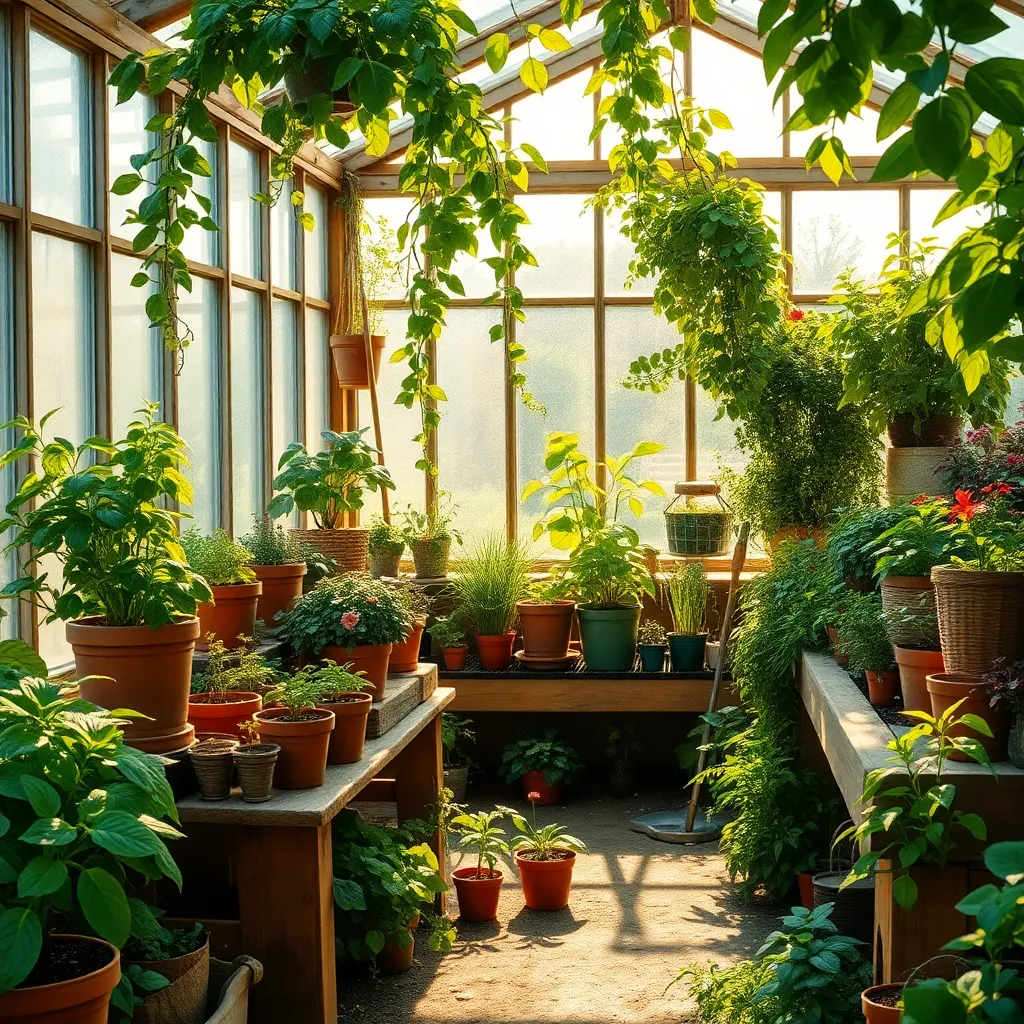
Greenhouses create a controlled environment that allows you to grow a wide variety of plants year-round. One of the most rewarding plants to cultivate in a greenhouse is tomatoes; they thrive in the stable temperatures and protection from pests that a greenhouse offers.
To ensure success with tomatoes, use a rich, well-draining soil and provide consistent watering without over-saturating the roots. Prune the plants regularly to encourage airflow and prevent fungal diseases, which can be more common in humid environments.
If you’re just starting out with greenhouse gardening, consider growing herbs like basil, mint, and cilantro. These herbs require minimal space and thrive in the warm, humid conditions of a greenhouse, making them perfect for beginners.
For best results, plant herbs in pots using a light, airy potting mix and ensure they receive ample sunlight. Water them sparingly, allowing the soil to dry slightly between waterings to prevent root rot, which is a common issue in greenhouse settings.
Experienced gardeners might enjoy adding exotic plants like orchids or citrus trees to their greenhouse collection. These plants can be more demanding, requiring specific humidity levels and careful temperature management.
When growing orchids, ensure they have a well-draining medium such as bark or sphagnum moss and maintain a consistent humidity level of around 60-80%. Citrus trees, on the other hand, need a balanced fertilizer and regular pruning to keep their growth in check and encourage fruiting.
Managing Climate Control Effectively
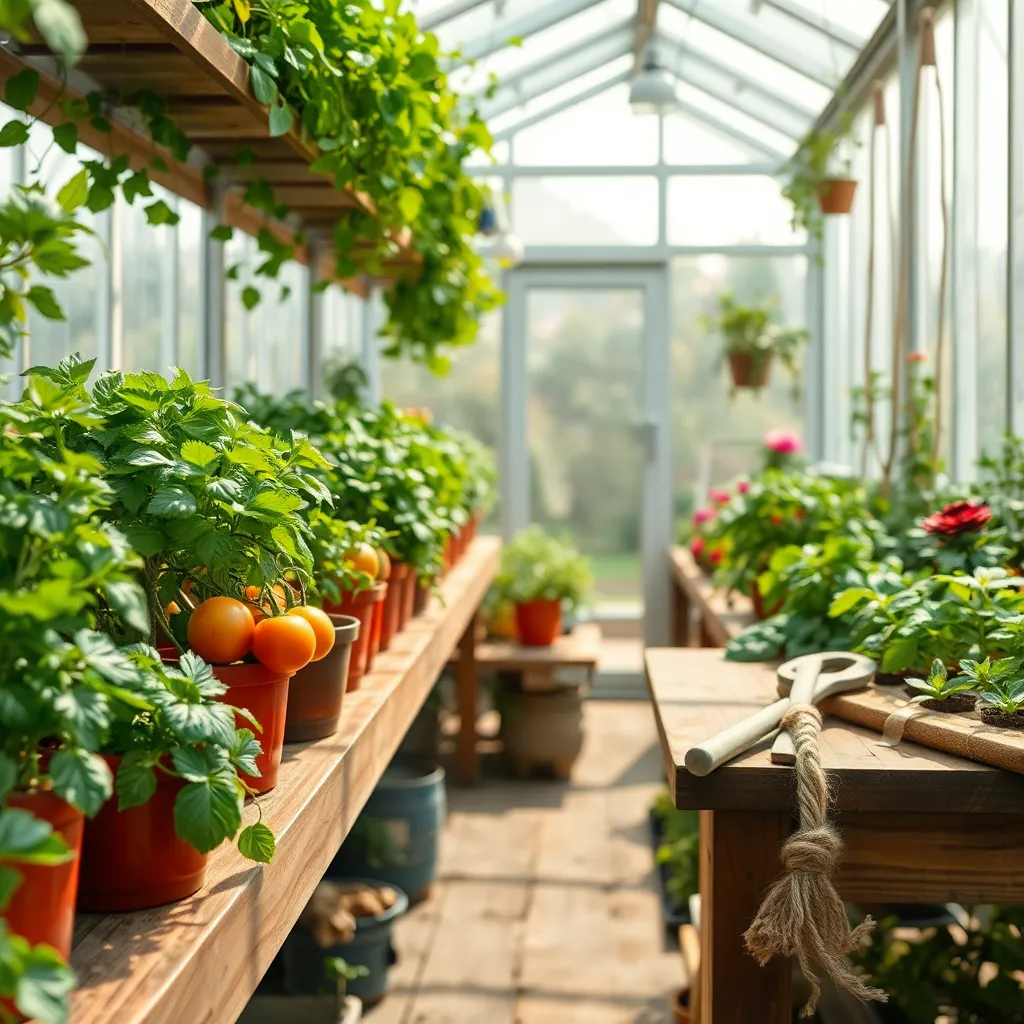
Effective climate control is crucial for a successful greenhouse garden, as it helps maintain optimal growing conditions year-round. Start by installing a reliable thermometer and hygrometer to monitor temperature and humidity levels consistently.
To regulate temperature, consider using a combination of passive and active systems. Ventilation is key, so ensure your greenhouse is equipped with vents or fans that can be adjusted according to the weather.
For beginners, opening vents during warmer days and closing them at night can help manage temperature fluctuations. More advanced gardeners might invest in an automated system that adjusts ventilation and shading automatically based on sensor readings.
Maintaining the right humidity is equally important, especially in colder months when heating systems can dry the air. Use a misting system or place water trays around your plants to maintain adequate humidity levels, benefiting plant growth and preventing disease.
Soil and Nutrient Essentials
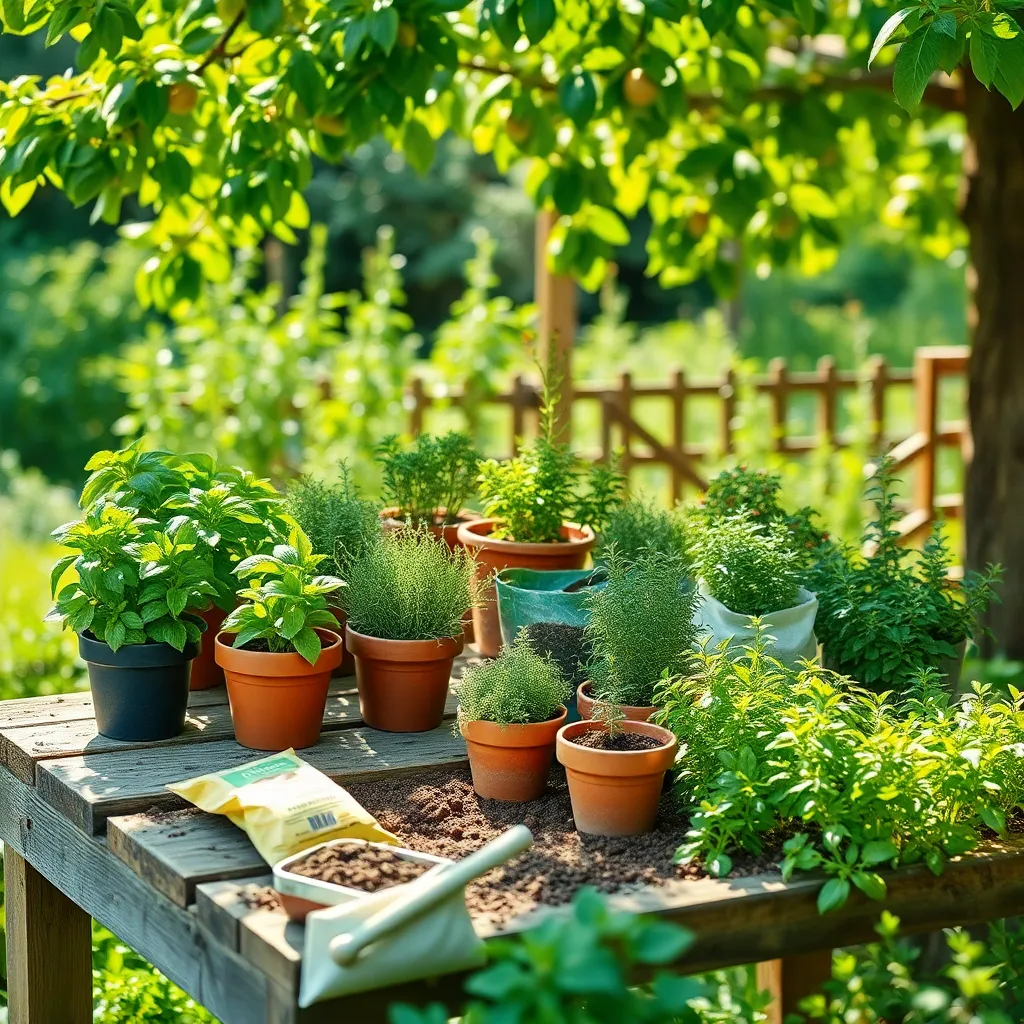
Understanding the essentials of soil and nutrients is crucial for a thriving greenhouse garden. Begin by selecting a high-quality potting mix that is well-draining yet retains enough moisture to keep roots hydrated.
It is important to test your soil’s pH levels to ensure it is suitable for the plants you plan to grow. Most vegetables and flowers prefer a slightly acidic to neutral pH, ranging from 6.0 to 7.0, which you can adjust by amending the soil with lime or sulfur as needed.
Enrich your soil with organic matter, such as compost or well-rotted manure, to improve its structure and fertility. This not only provides essential nutrients but also enhances microbial activity, creating a healthy environment for plant roots.
For those looking to optimize growth, consider using a balanced fertilizer that provides a complete range of nutrients, including nitrogen, phosphorus, and potassium. Apply fertilizers according to package instructions to avoid over-fertilizing, which can harm plants and lead to nutrient runoff.
Advanced gardeners might explore the benefits of incorporating mycorrhizal fungi into the soil, which can enhance nutrient uptake and improve plant resilience. By fostering a symbiotic relationship with plant roots, these fungi help your plants access nutrients more efficiently, boosting growth and health.
Pest and Disease Prevention
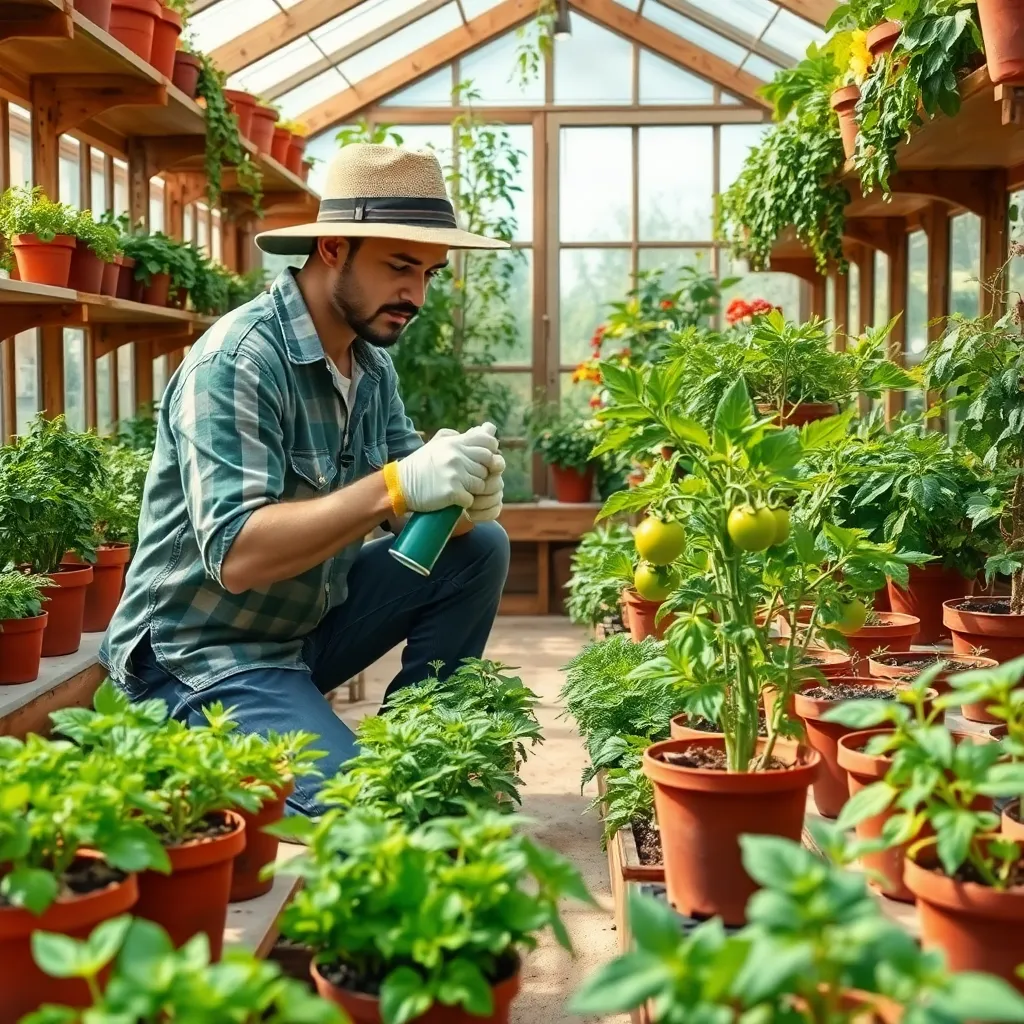
Preventing pests and diseases in your greenhouse garden begins with maintaining a clean and organized environment. Regularly remove dead leaves and debris to reduce hiding spots for pests and prevent fungal growth.
Another essential practice is to monitor your plants frequently for early signs of trouble. Check the undersides of leaves for aphids or mites, and look for any discoloration or wilting that might indicate disease.
Implementing crop rotation and companion planting can be effective strategies in pest management. By alternating plant families and pairing plants like marigolds with vegetables, you can naturally deter pests and improve soil health.
For a more advanced approach, consider introducing beneficial insects such as ladybugs or predatory mites into your greenhouse. These natural predators help keep pest populations in check without the need for chemical interventions.
Maintaining optimal humidity and temperature levels is also crucial in preventing disease outbreaks. Aim to keep your greenhouse well-ventilated and use fans if necessary to promote air circulation and reduce moisture build-up.
Finally, using disease-resistant plant varieties can significantly decrease the likelihood of infections. When selecting seeds or seedlings, choose those labeled as resistant to common diseases in your area for added peace of mind.
Conclusion: Growing Success with These Plants
In “Growing Your Own Greenhouse Garden,” we explored five essential relationship concepts: cultivating communication, nurturing trust, setting healthy boundaries, practicing empathy, and celebrating growth. These principles are akin to tending a thriving garden—each requiring attention, patience, and care to flourish. By communicating openly, you plant the seeds of understanding; building trust fortifies your relationship’s roots; establishing boundaries ensures a healthy environment; empathy waters your connection with compassion; and celebrating growth lets your relationship bloom.
As an immediate next step, choose one concept to focus on this week. Perhaps initiate a heartfelt conversation or set aside time to actively listen to your partner. By taking small, intentional actions, you can nurture positive change.
Remember, like tending to a garden, relationships require ongoing care and attention. Bookmark this article for easy reference as you navigate your journey together, ensuring these tips are always at your fingertips. With dedication and effort, your relationship can flourish and withstand life’s seasons, growing stronger each day. So, take action today and watch as your relationship garden thrives, paving the way for enduring success and happiness.

